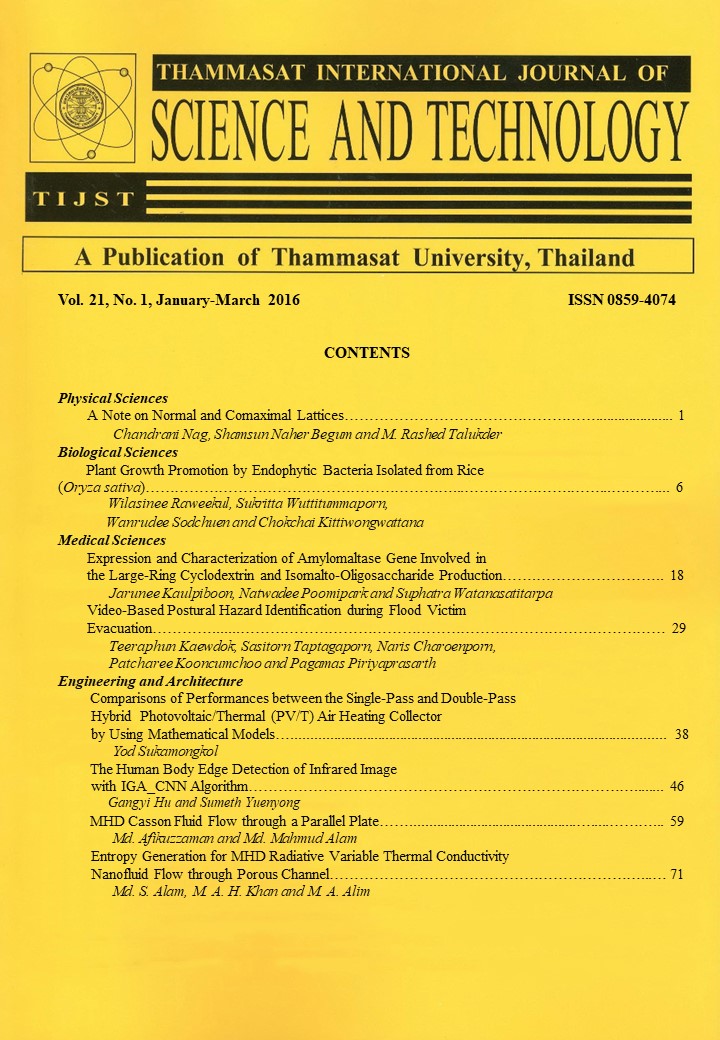Video-Based Postural Hazard Identification during Flood Victim Evacuation
Main Article Content
Abstract
Several inappropriate postures have been adopted in the evacuation of disaster victims, which is the important procedure in emergency life-saving responses. Despite safety for the victims, these responses may become the major cause of musculoskeletal injuries among staff. The purpose of this study was to identify lifting and handling postures during disaster and to explore risks of musculoskeletal injuries during flood victim evacuation. A retrospective review of snapshots from video recordings of the 2011 Flood in Thailand was conducted. The Rapid Entire Body Assessment technique was used to assess risk of musculoskeletal injuries during manual handling and lifting.
The most common method used during flood evacuation was manual handling. More than 50% of lifting postures were medium to very high risk. Potential causes of injury included general characteristics of staff, victims, handling methods, equipment, and environment.
Conclusion: These findings revealed baseline data for future disaster risk management related to musculoskeletal injuries. Harmful postures were identified during evacuation activities. Safety practices and proper evacuations are paramount for emergency staff to prevent injuries during evacuation in flooding and other disaster situations.


